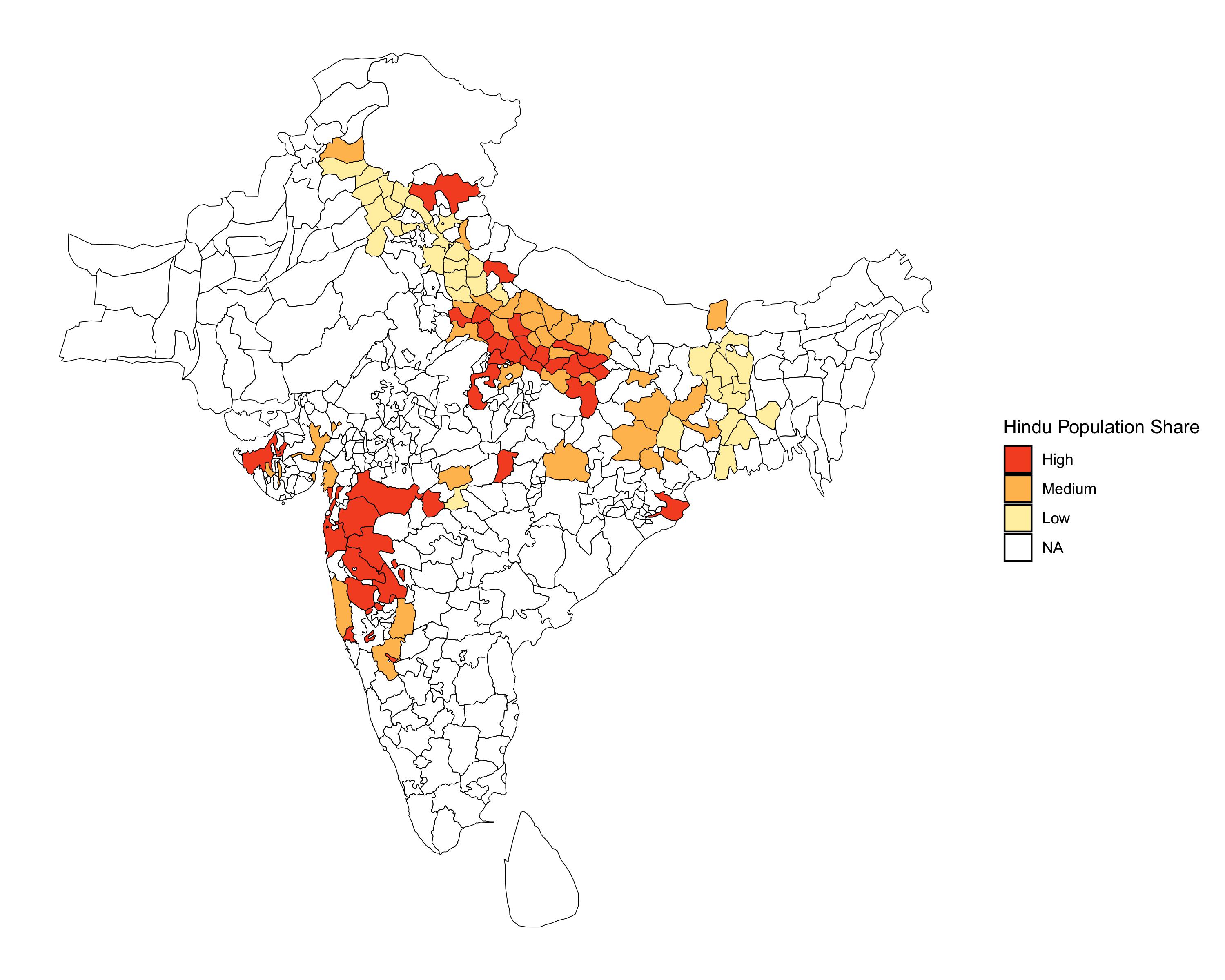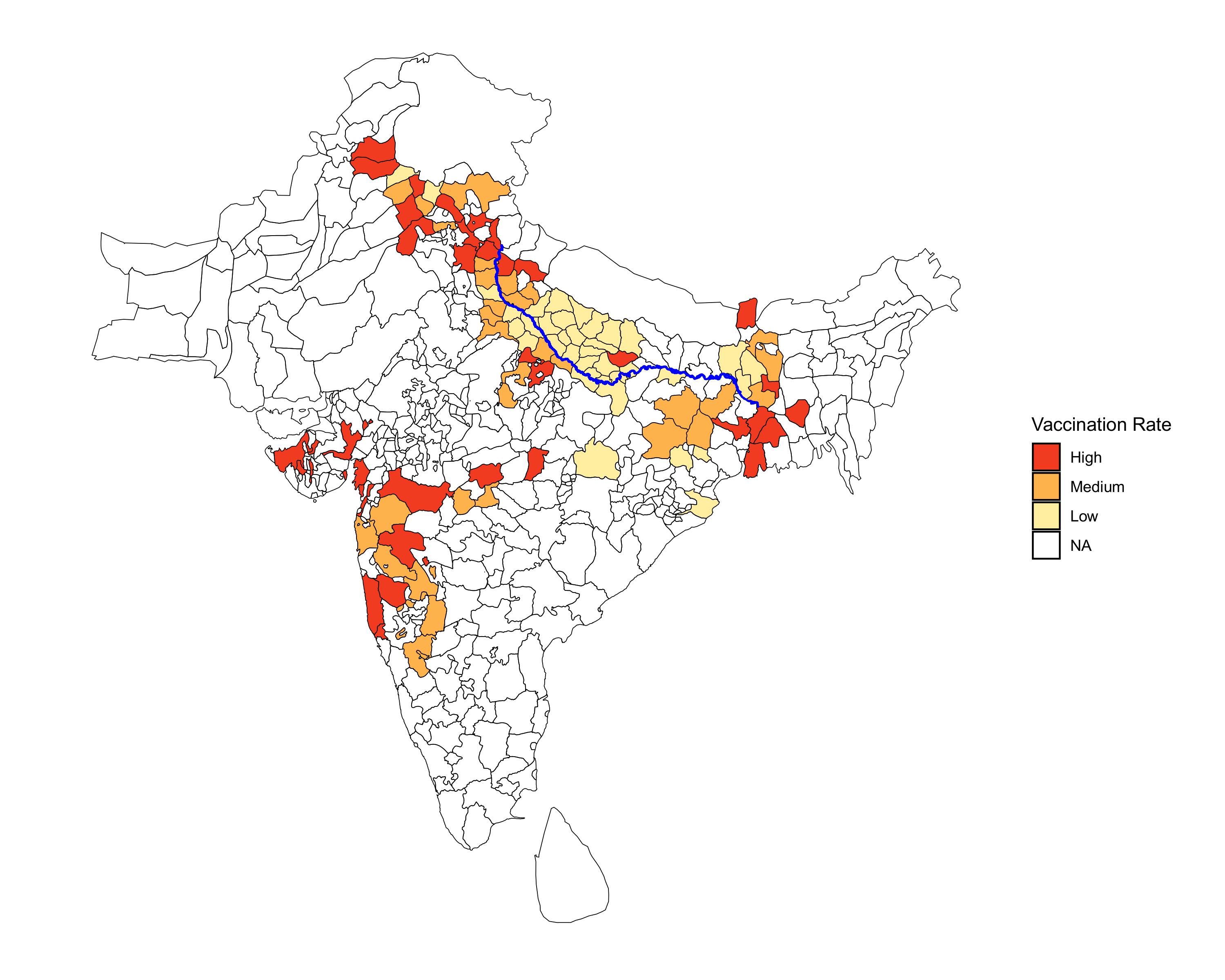Pox, Piety, and Paradox: The Economics of Vaccination in British India
Download Paper (PDF) Dissertation Abstract (PDF)
Abstract
This paper presents new historical evidence on the cultural roots of vaccine hesitancy and its medium-term effects. Using a newly compiled district-level dataset with religion-specific vaccination rates across colonial India (1868-1878), I examine how Hindu religious beliefs affected smallpox vaccination uptake. An instrumental variables approach using historical Hindu temple desecration sites shows that a one standard deviation increase in Hindu population share leads to a 0.89 to 1.98 percentage points decrease in Hindu vaccination rate at the district level. These effects are specific to Hindu populations and operate through religious and cultural practices. By 1891, a one standard deviation increase in Hindu share is associated with 17.7 and 12.6 percentage point increases in unmarried and widow ratios among young adults aged 10-25. The findings highlight the societal impact of culturally-driven vaccine hesitancy and guide culturally sensitive health policies.
Geographic Distribution of Hindu Population and Vaccination Rates


Spatial patterns in British India (1868-1878). Left panel shows the district-wise average Hindu population share. Right panel displays the average smallpox vaccination rates across districts.
